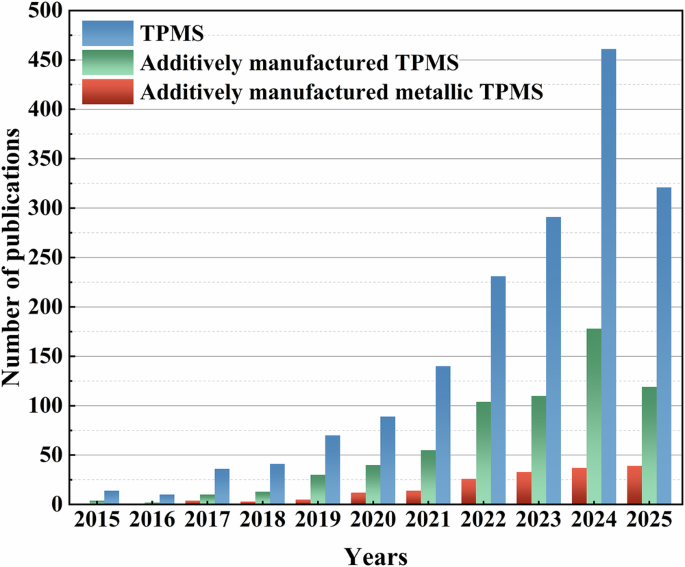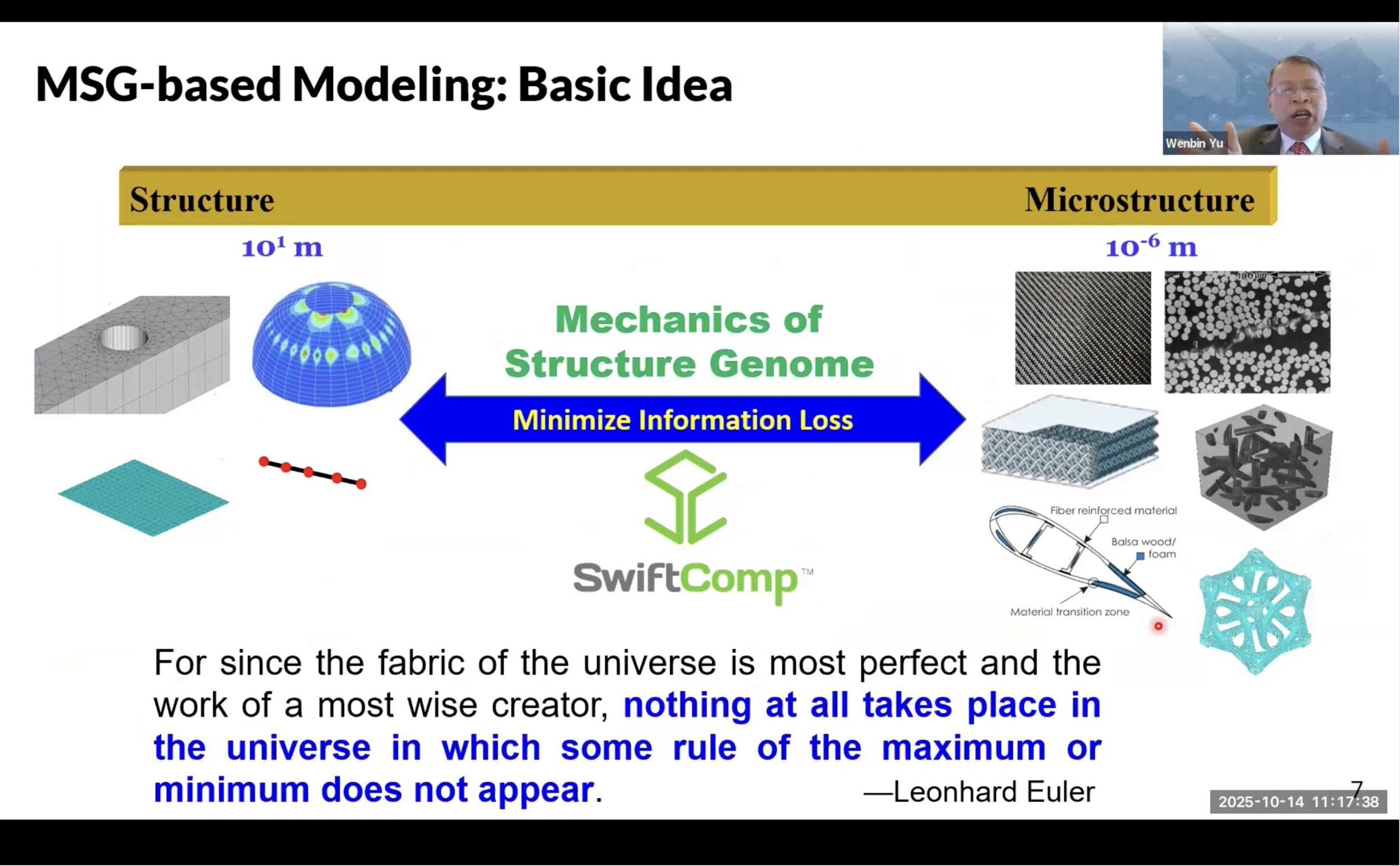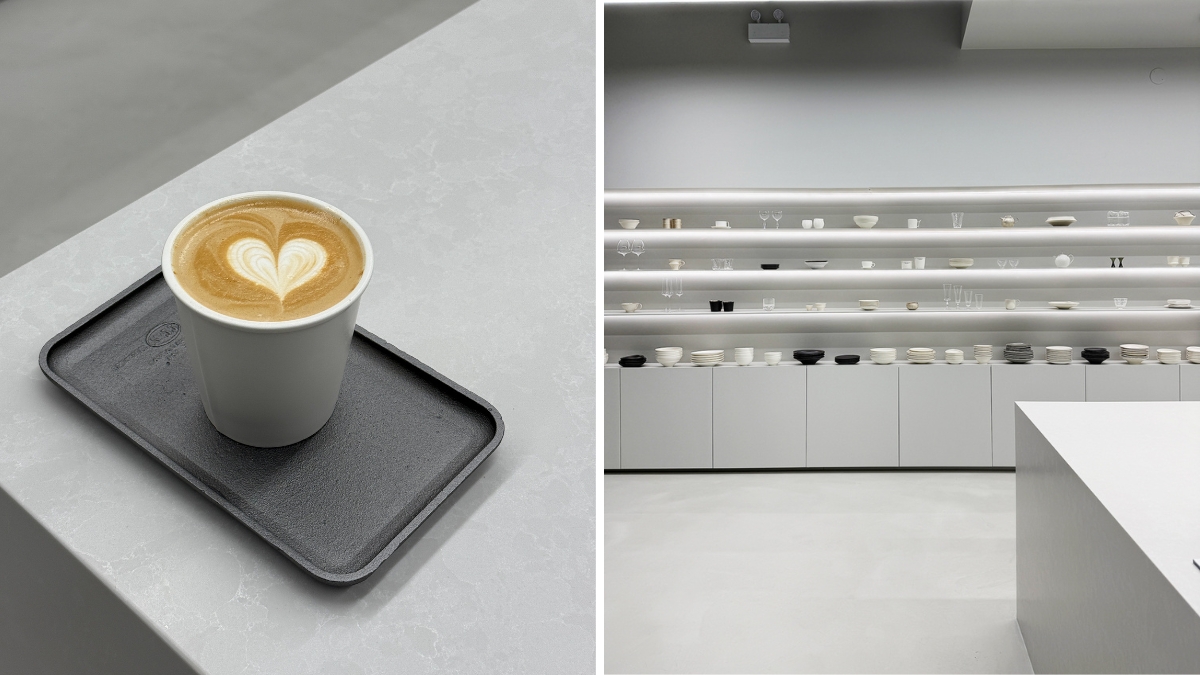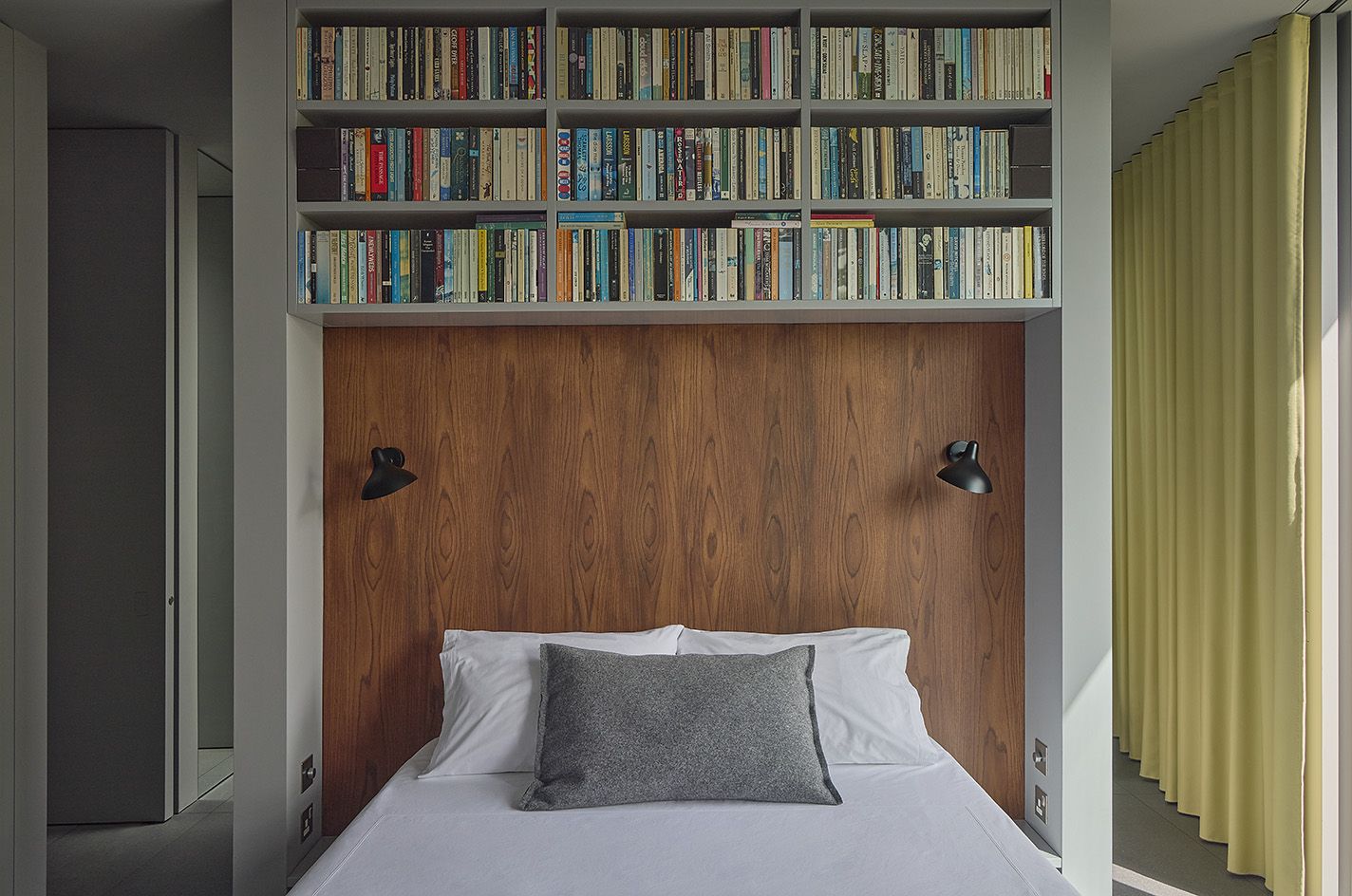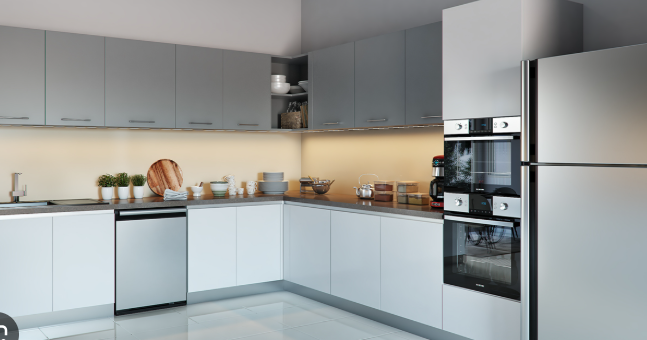The convergent design evolution of multiscale biomineralized structures in extinct and extant organisms

Wainwright, S. A. Mechanical design in organisms (Princeton University Press, 1982).
Wegst, U. G. & Ashby, M. F. The mechanical efficiency of natural materials. Philos. Mag. 84, 2167–2186 (2004).
Google Scholar
Vogel, S. Comparative biomechanics: life’s physical world (Princeton University Press, 2013).
Hamm, C. Evolution of Lightweight Structures: Analyses and Technical Applications. (Springer, Berlin/Heidelberg, Germany, 2015).
Lowenstam, H. A. Minerals formed by organisms. Science 211, 1126–1131 (1981).
Google Scholar
Addadi, L. & Weiner, S. Biomineralization: mineral formation by organisms. Phys. Scr. 89, 098003 (2014).
Google Scholar
Clites, E. C., Droser, M. L. & Gehling, J. G. The advent of hard-part structural support among the ediacara biota: Ediacaran harbinger of a Cambrian mode of body construction. Geology 40, 307–310 (2012).
Google Scholar
Cohen, P. A., Schopf, J. W., Butterfield, N. J., Kudryavtsev, A. B. & Macdonald, F. A. Phosphate Biomineralization in Mid-Neoproterozoic Protists. Geology 39, 539–542 (2011).
Google Scholar
Gilbert, P. U. P. A. et al. Biomineralization: integrating mechanism and evolutionary history. Sci. Adv. 8, 9653 (2022).
Google Scholar
Bels, V. L., Russell, A. P. Convergent Evolution (Springer, 2023).
Hildebrand, M., Goslow, G. E. Analysis of vertebrate structure. In Analysis of vertebrate structure pp 125–155 (Wiley, 2001).
Huang, W. et al. Multiscale toughening mechanisms in biological materials and bioinspired designs. Adv. Mater. 31, 1901561 (2019).
Google Scholar
Yaraghi, N. A. & Kisailus, D. Biomimetic structural materials: inspiration from design and assembly. Annu. Rev. Phys. Chem. 69, 23–57 (2018).
Google Scholar
Barthelat, F. Architectured materials in engineering and biology: fabrication, structure, mechanics and performance. Int. Mater. Rev. 60, 413–430 (2015).
Google Scholar
Vincent, J. F., Bogatyreva, O. A., Bogatyrev, N. R., Bowyer, A. & Pahl, A. K. Biomimetics: its practice and theory. J. R. Soc. Interface 3, 471–482 (2006).
Google Scholar
Bhushan, B. Biomimetics: lessons from nature–an overview. Philos. Trans. R. Soc. Math. Phys. Eng. Sci. 367, 1445–1486 (2009).
Google Scholar
Seilacher, A. Gishlick A. D. Morphodynamics (CRC Press, 2014).
Perricone, V., Santulli, C., Rendina, F. & Langella, C. Organismal design and biomimetics: a problem of scale. Biomimetics 6, 56 (2021).
Google Scholar
Naleway, S. E., Porter, M. M., McKittrick, J. & Meyers, M. A. Structural design elements in biological materials: application to bioinspiration. Adv. Mater. 27, 5455–5476 (2015).
Google Scholar
Jablonski, D. Extinction: past and present. Nature 427, 589 (2004).
Google Scholar
Perricone, V., Grun, T., Raia, P. & Langella, C. Paleomimetics: a conceptual framework for a biomimetic design inspired by fossils and evolutionary processes. Biomimetics 7, 89 (2022).
Google Scholar
Ashby, M. F., Medalist, R. M. The mechanical properties of cellular solids. (1983).
Gibson, L. J. Cellular solids. MRS Bull. 28, 270–274 (2003).
Google Scholar
Gibson, L. J. Biomechanics of cellular solids. J. Biomech. 38, 377–399 (2005).
Google Scholar
Meyers, M. A., Chen, P. Y., Lin, A. Y. M. & Seki, Y. Biological materials: structure and mechanical properties. Prog. Mater. Sci. 53, 1–206 (2008).
Google Scholar
Meyers, M. A., McKittrick, J. & Chen, P.-Y. Structural biological materials: critical mechanics-materials connections. Science 339, 773–779 (2013).
Google Scholar
Porter, S. The rise of predators. Geology 39, 607–608 (2011).
Google Scholar
Pearce, P. Structure in nature is a strategy for design (MIT Press, 1990).
Perricone, V. et al. Hexagonal Voronoi pattern detected in the microstructural design of the echinoid skeleton. J. R. Soc. Interface 19, 20220226 (2022).
Google Scholar
Weaver, J. C. et al. Hierarchical assembly of the siliceous skeletal lattice of the hexactinellid sponge. Euplectella Aspergillum. J. Struct. Biol. 158, 93–106 (2007).
Google Scholar
Fratzl, P. & Weinkamer, R. Nature’s hierarchical materials. Prog. Mater. Sci. 52, 1263–1334 (2007).
Google Scholar
Nickel, M., Bullinger, E. & Beckmann, F. Functional morphology of Tethya species (Porifera): 2. three-dimensional morphometrics on spicules and skeleton superstructures of T. Minuta. Zoomorphology 125, 225–239 (2006).
Google Scholar
Woźnica, A., Karczewski, J., Bernaś, T., Świątek, P., Drab, M., Surma, R., Babczyńska, A. The spatial structure (3D) and mechanical properties of the sponge Spongilla Lacustris L. (Porifera: Spongillida) skeleton as a potential tensegral architecture. Eur. Zool. J. 89, 1002–1017 (2022).
Marin, F., Bundeleva, I., Takeuchi, T., Immel, F. & Medakovic, D. Organic matrices in metazoan calcium carbonate skeletons: composition, functions, evolution. J. Struct. Biol. 196, 98–106 (2016).
Google Scholar
Lowenstam, H. A. & Weiner, S. On biomineralization (Oxford Univ. Press, 1989).
Fleck, N. A., Deshpande, V. S. & Ashby, M. F. Micro-architectured materials: past, present and future. Proc. R. Soc. Math. Phys. Eng. Sci. 466, 2495–2516 (2010).
Google Scholar
Von Meyer, G. Die Architektur. der Spongiosa. Archs Anat. Physiol. Wiss. Med 34, 615–628 (1867).
Wolff, J. Ueber die innere Architectur der Knochen und ihre Bedeutung für die Frage vom Knochenwachsthum. Clin. Orthop. Relat. Res. 468, 1056–1065 (2010).
Google Scholar
Padian, K., Lamm, E. T. Why study the bone microstructure of fossil tetrapods. bone histology of fossil tetrapods: advancing methods, analysis, and interpretation (University of California Press, 2013).
Swartz, S. M., Bennett, M. B., Carrier, D. R. Wing bone stresses in free flying bats and the evolution of skeletal design for flight. Nature (1992).
de Margerie, E. Laminar bone as an adaptation to torsional loads in flapping flight. Anat. Rec. 201, 521–526 (2002).
Google Scholar
Williams, C. J. et al. Helically arranged cross struts in azhdarchid pterosaur cervical vertebrae and their biomechanical implications. Science 24. (2021).
Du Plessis, A., Broeckhoven, C., Yadroitsev, I., Yadroitsava, I. & Roux, S. G. Analyzing nature’s protective design: the glyptodont body armor. J. Mech. Behav. Biomed. Mater. 82, 218–223 (2018).
Google Scholar
Su, F. Y. et al. Spines of the porcupine fish: structure, composition, and mechanical properties. J. Mech. Behav. Biomed. Mater. 73, 38–49 (2017).
Google Scholar
Schmidt, F. N. et al. On the origins of fracture toughness in advanced teleosts: how the swordfish sword’s bone structure and composition allow for slashing under water to kill or stun prey. Adv. Sci. 6, 1900287 (2019).
Google Scholar
Toader, N., Sobek, W. & Nickel, K. G. Energy absorption in functionally graded concrete bioinspired by sea urchin spines. J. Bionic Eng. 14, 369–378 (2017).
Google Scholar
Li, Y. et al. Porous morphology and graded materials endow hedgehog spines with impact resistance and structural stability. Acta Biomater. 147, 91–101 (2022).
Google Scholar
Torelli, G., Fernández, M. G. & Lees, J. M. Functionally graded concrete: design objectives, production techniques, and analysis methods for layered and continuously graded elements. Constr. Build. Mater. 242, 118040 (2020).
Google Scholar
Ahamed, M. K., Wang, H. & Hazell, P. J. From biology to biomimicry: using nature to build better structures–a review. Constr. Build. Mater. 320, 126195 (2022).
Google Scholar
Perricone, V. et al. Echinoid skeleton: an insight on the species-specific pattern of the Paracentrotus lividus plate and its microstructural variability. J. R. Soc. Interface 20, 20220673 (2023).
Google Scholar
Presser, V., Schultheiß, S., Berthold, C. & Nickel, K. G. Sea urchin spines as a model-system for permeable, light-weight ceramics with graceful failure behaviour. Part I. Mechanical behaviour of sea urchin spines under compression. J. Bionic Eng. 6, 203–213 (2009).
Google Scholar
Grossmann, J. N. & Nebelsick, J. H. Comparative morphological and structural analysis of selected cidaroid and camarodont sea urchin spines. Zoomorph 132, 301–315 (2013).
Google Scholar
Koehl, M. A. R. Mechanical design of spicule-reinforced connective tissue: stiffness. J. Exp. Biol. 98, 239–267 (1982).
Google Scholar
Hu, Z. et al. Design of ultra-lightweight and high-strength cellular structural composites inspired by biomimetics. Compos. B Eng. 121, 108–121 (2017).
Google Scholar
Ramakrishna, D. & Bala Murali, G. Bio-inspired 3d-printed lattice structures for energy absorption applications: a review. Proc. Inst. Mech. Eng. J Mater. Des. Appl. 237, 503–542 (2023).
Jang, J. H. et al. 3D polymer microframes that exploit length‐scale‐dependent mechanical behavior. Adv. Mater. 18, 2123–2127 (2006).
Google Scholar
Zhao, N. et al. Bioinspired materials: from low to high dimensional structure. Adv. Mater. 26, 6994–7017 (2014).
Google Scholar
Zhang, H. K., Wu, W. J., Kang, Z. & Feng, X. Q. Topology optimization method for the design of bioinspired self-similar hierarchical microstructures. Comput. Methods Appl. Mech. Eng. 372, 113399 (2020).
Google Scholar
Naboni, R. & Kunic, A. Bone-Inspired 3D printed structures for construction applications. Gest. Tecnol. Proj. 14, 111–124 (2019).
Google Scholar
Weaver, J. C. et al. Hierarchical assembly of the siliceous skeletal lattice of the hexactinellid sponge Euplectella aspergillum. J. Struct. Biol. 158, 93–106 (2007).
Google Scholar
Fernandes, M. C., Aizenberg, J., Weaver, J. C. & Bertoldi, K. Mechanically robust lattices inspired by deep-sea glass sponges. Nat. Mater. 20, 237–241 (2021).
Google Scholar
Montroni, D. et al. Direct ink write printing of chitin-based gel fibers with customizable fibril alignment, porosity, and mechanical properties for biomedical applications. J. Funct. Biomater. 13, 83 (2022).
Google Scholar
Duro-Royo, J., Zak, J., Tai, Y. J., Ling, A. S., Oxman, N. Parametric chemistry reverse engineering biomaterial composites for additive manufacturing of bio-cement structures across scales. In Challenges for Technology Innovation: An Agenda for the Future 217–223 (CRC Press, 2017).
Li, Y., Ortiz, C. & Boyce, M. C. Bioinspired, mechanical, deterministic fractal model for hierarchical suture joints. Phys. Rev. E 85, 031901 (2012).
Google Scholar
Krauss, S., Monsonego‐Ornan, E., Zelzer, E., Fratzl, P. & Shahar, R. Mechanical function of a complex three‐dimensional suture joining the bony elements in the shell of the red‐eared slider turtle. Adv. Mater. 21, 407–412 (2009).
Google Scholar
Hewitt, R. A., Westermann & Gerd, E. G. Mechanical significance of ammonoid septa with complex sutures. Lethaia 30, 205–212 (1997).
Google Scholar
Jaslow, C. R. & Biewener, A. A. Strain patterns in the horncores, cranial bones and sutures of goats (Capra Hircus) during impact loading. J. Zool. 235, 193–210 (1995).
Google Scholar
Buezas, G., Becerra, F. & Vassallo, A. Cranial suture complexity in caviomorph rodents (Rodentia; Ctenohystrica). J. Morphol. 278, 1125–1136 (2017).
Shahar, R., Kraus, S., Monsonego-Ornan, E. & Fratzl, P. Mechanical function of a complex three-dimensional suture joining the bony elements in the shell of the red-eared slider turtle. MRS Online Proc. Libr. 1187, 1187–KK01 (2009).
Google Scholar
Andersen, S. O. Insect cuticular sclerotization: a review. Insect Biochem. Mol. Biol. 40, 166–178 (2010).
Google Scholar
Luquet, G. Biomineralizations: insights and prospects from crustaceans. ZooKeys 176, 103 (2012).
Google Scholar
Paterson, J. R. & Edgecombe, G. D. The early Cambrian trilobite family emuellidae Pocock, 1970: systematic position and revision of Australian species. J. Paleontol. 80, 496–513 (2006).
Google Scholar
Esteve, J., Marcé‐Nogué, J., Pérez‐Peris, F. & Rayfield, E. Cephalic biomechanics underpins the evolutionary success of trilobites. Palaeontology 64, 519–530 (2021).
Google Scholar
Santini, F., Sorenson, L., Marcroft, T., Dornburg, A. & Alfaro, M. E. A multilocus molecular phylogeny of boxfishes (Aracanidae, Ostraciidae; Tetraodontiformes). Mol. Phylogenet. Evol. 66, 153–160 (2013).
Yang, W., Naleway, S. E., Porter, M. M., Meyers, M. A. & McKittrick, J. The armored carapace of the Boxfish. Acta Biomater. 23, 1–10 (2015).
Google Scholar
Garner, S. N. et al. The role of collagen in the dermal armor of the boxfish. J. Mater. Res. Technol. 9, 13825–13841 (2020).
Google Scholar
Marmo, F., Perricone, V., Cutolo, A., Daniela Candia Carnevali, M., Langella, C., Rosati, L. Flexible sutures reduce bending moments in shells: from the echinoid test to tessellated shell structures. R. Soc. Open Sci. 9, 211972 (2022).
Rivera, J. et al. Toughening mechanisms of the elytra of the diabolical ironclad beetle. Nature 586, 543–548 (2020).
Google Scholar
Rivera, J. et al. Structural design variations in beetle elytra. Adv. Funct. Mater. 31, 2106468 (2021).
Google Scholar
Rivera, J., Yaraghi, N., Arango, D., Zavattieri, P., Kisailus, D. Compression resistant designs from the exoskeleton of a tough beetle. Proceedings of the 21st International Conference on Composite Materials, August 20–25 (2017).
Montroni, D., et al. The Multiphasic Teeth of Chiton Articulatus, an Abrasion‐resistant and Self‐sharpening Tool for Hard Algae Collection. Adv. Funct. Mater. (2024).
Beniash, E., et al. The hidden structure of human enamel. Nat. Commun. 10 (2019).
Al-Mosawi, M., et al. Crystallographic texture and mineral concentration quantification of developing and mature human incisal enamel. Sci. Rep. 8. (2018).
Mao, J. J. Mechanobiology of craniofacial sutures. J. Dent. Res. 81, 810–816 (2002).
Google Scholar
Miura, T. et al. Mechanism of skull suture maintenance and interdigitation. J. Anat. 215, 642–655 (2009).
Google Scholar
Alheit, B., Bargmann, S. & Reddy, B. D. Computationally modelling the mechanical behaviour of turtle shell sutures—a natural interlocking structure. J. Mech. Behav. Biomed. Mater. 110, 103973 (2020).
Google Scholar
Li, Y., Ortiz, C. & Boyce, M. C. A generalized mechanical model for suture interfaces of arbitrary geometry. J. Mech. Phys. Solids 61, 1144–1167 (2013).
Google Scholar
Li, Y., Ortiz, C. & Boyce, M. C. Stiffness and strength of suture joints in nature. Phys. Rev. E 84, 062904 (2011).
Google Scholar
Liu, L. et al. The effects of morphological irregularity on the mechanical behavior of interdigitated biological sutures under tension. J. Biomech. 58, 71–78 (2017).
Google Scholar
Wu, D. et al. Stiffness and toughness of soft/stiff suture joints in biological composites. Appl. Math. Mech. 43, 1469–1484 (2022).
Google Scholar
Alheit, B., Bargmann, S. & Reddy, B. How suture networks improve the protective function of natural structures: a multiscale investigation. Acta Biomater. 145, 283–296 (2022).
Google Scholar
Lee, N. et al. Stress wave mitigation at suture interfaces. Biomed. Phys. Amp Eng. Express 3, 035025 (2017).
Google Scholar
Zhang, J. & An, B. Contribution of energy dissipation to dynamic fracture resistance of the turtle carapace. Eng. Fract. Mech. 290, 109505 (2023).
Google Scholar
Zavattieri, P. D., Hector, L. G. & Bower, A. F. Cohesive zone simulations of crack growth along a rough interface between two elastic-plastic solids. Eng. Fract. Mech. 75, 4309–4332 (2008).
Google Scholar
Gibbons, M. M. & Chen, D. A. Bio-inspired sutures: using finite element analysis to parameterize the mechanical response of dovetail sutures in simulated bending of a curved structure. Biomimetics 7, 82 (2022).
Google Scholar
Lazarus, B. S., Velasco-Hogan, A., Gómez-del Río, T., Meyers, M. A. & Jasiuk, I. A review of impact resistant biological and bioinspired materials and structures. J. Mater. Res. Technol. 9, 15705–15738 (2020).
Google Scholar
Huang, W. et al. Nanoarchitected tough biological composites from assembled chitinous scaffolds. Acc. Chem. Res. 55, 1360–1371 (2022).
Google Scholar
Malik, I. A., Mirkhalaf, M. & Barthelat, F. Bio-inspired “Jigsaw”-like interlocking sutures: modeling, optimization, 3D printing and testing. J. Mech. Phys. Solids 102, 224–238 (2017).
Google Scholar
Nikookar, N. Design through digital making: a human-system collaboration framework. Master’s Thesis, Carnegie Mellon University, Pittsburgh, PA. (2020).
Menges, A. et al. ICD/ITKE Research Pavillion 2015-16 Project Report. (Presskit: Stuttgart, Germany, 2016). https://www.itke.uni-stuttgart.de/research/icd-itke-research-pavilions/icd-itke-research-pavilion-2015-16/.
Bouligand, Y. On a twisted fibrillar arrangement common to several biological structures. C R Hebd. Séances Acad. Sci. Sci. Nat. 261, 4864 (1965).
Google Scholar
Zimmermann, E. A. et al. Mechanical adaptability of the bouligand-type structure in natural dermal armour. Nat. Commun. 4, 1–7 (2013).
Google Scholar
Cheng, C., Shao, Z. & Vollrath, F. Silk fibroin-regulated crystallization of calcium carbonate. Adv. Funct. Mater. 18, 2172–2179 (2008).
Google Scholar
Sachs, C., Fabritius, H. & Raabe, D. Influence of microstructure on deformation anisotropy of mineralized cuticle from the lobster Homarus Americanus. J. Struct. Biol. 161, 120–132 (2008).
Google Scholar
Cheng, L., Wang, L. & Karlsson, A. M. Mechanics-based analysis of selected features of the exoskeletal microstructure of Popillia japonica. J. Mater. Res. 24, 3253–3267 (2009).
Google Scholar
Libby, E. et al. Light reflection by the cuticle of C. Aurigans scarabs: a biological broadband reflector of left handed circularly polarized light. J. Opt. 16, 082001 (2014).
Google Scholar
Campos-Fernández, C., Azofeifa, D. E., Hernández-Jiménez, M., Ruiz-Ruiz, A. & Vargas, W. E. Visible light reflection spectra from cuticle layered materials. Opt. Mater. Express 1, 85–100 (2011).
Google Scholar
Jewell, S. A., Vukusic, P. & Roberts, N. W. Circularly polarized colour reflection from helicoidal structures in the beetle plusiotis boucardi. N. J. Phys. 9, 99 (2007).
Google Scholar
Bruet, B. J. F., Song, J., Boyce, M. C. & Ortiz, C. Materials design principles of ancient fish armour. Nat. Mater. 7, 748–756 (2008).
Google Scholar
Yin, S. et al. Toughening mechanism of coelacanth-fish-inspired double-helicoidal composites. Compos. Sci. Technol. 205, 108650 (2021).
Google Scholar
Yang, W. et al. Protective role of Arapaima Gigas fish scales: structure and mechanical behavior. Acta Biomater. 10, 3599–3614 (2014).
Google Scholar
Sun, J. & Bhushan, B. Structure and mechanical properties of beetle wings: a review. RSC Adv. 2, 12606 (2012).
Google Scholar
Taylor, J. R. A. & Patek, S. N. Ritualized fighting and biological armor: the impact mechanics of the Mantis Shrimp’s Telson. J. Exp. Biol. 213, 3496–3504 (2010).
Google Scholar
Weaver, J. C. et al. The stomatopod dactyl club: a formidable damage-tolerant biological hammer. Science 336, 1275–1280 (2012).
Google Scholar
Guarín-Zapata, N., Gomez, J., Yaraghi, N., Kisailus, D. & Zavattieri, P. D. Shear wave filtering in naturally-occurring bouligand structures. Acta Biomater. 23, 11–20 (2015).
Google Scholar
Yaraghi, N. A. et al. A sinusoidally architected helicoidal biocomposite. Adv. Mater. 28, 6835–6844 (2016).
Google Scholar
Yaraghi, N. A. et al. The stomatopod telson: convergent evolution in the development of a biological shield. Adv. Funct. Mater. 29, 1902238 (2019).
Google Scholar
Suksangpanya, N., Yaraghi, N. A., Kisailus, D. & Zavattieri, P. Twisting cracks in bouligand structures. J. Mech. Behav. Biomed. Mater. 76, 38–57 (2017).
Google Scholar
Suksangpanya, N., Yaraghi, N. A., Pipes, R. B., Kisailus, D. & Zavattieri, P. Crack twisting and toughening strategies in bouligand architectures. Int. J. Solids Struct. 150, 83–106 (2018).
Google Scholar
Grunenfelder, L. K. et al. Ecologically driven ultrastructural and hydrodynamic designs in stomatopod cuticles. Adv. Mater. 30, 1705295 (2018).
Google Scholar
Zaheri, A. Convergent evolution in biological lamellar systems: multiscale structures and mechanics. Ph.D. Diss. (Northwestern University, 2019).
Launey, M. E., Buehler, M. J. & Ritchie, R. O. On the mechanistic origins of toughness in bone. Annu. Rev. Mater. Res. 40, 25–53 (2010).
Google Scholar
Kolednik, O., Predan, J., Fischer, F. D. & Fratzl, P. Bioinspired design criteria for damage-resistant materials with periodically varying microstructure. Adv. Funct. Mater. 21, 3634–3641 (2011).
Google Scholar
He, M. & Hutchinson, J. W. Crack deflection at an interface between dissimilar elastic materials. Int. J. Solids Struct. 25, 1053–1067 (1989).
Google Scholar
Greenfeld, I., Kellersztein, I. & Wagner, H. D. Nested helicoids in biological microstructures. Nat. Commun. 11, 224 (2020).
Google Scholar
Cheng, L., Thomas, A., Glancey, J. L. & Karlsson, A. M. Mechanical behavior of bio-inspired laminated composites. Compos. A 42, 211–220 (2011).
Google Scholar
Grunenfelder, L. K. et al. Bio-inspired impact-resistant composites. Acta Biomater. 10, 3997–4008 (2014).
Google Scholar
Grunenfelder, L. K., Herrera, S. & Kisailus, D. Crustacean-derived biomimetic components and nanostructured composites. Small 10, 3207–3232 (2014).
Google Scholar
Rivera, J., Yaraghi, N. A., Huang, W., Gray, D. & Kisailus, D. Modulation of impact energy dissipation in biomimetic helicoidal composites. J. Mater. Res. Technol. 9, 14619–14629 (2020).
Google Scholar
Koizumi, H. et al. Surface roughness and gloss of current CAD/CAM resin composites before and after toothbrush abrasion. Dent. Mater. J. 34, 881–887 (2015).
Google Scholar
Nan, N., DeVallance, D. B., Xie, X. & Wang, J. The effect of bio-carbon addition on the electrical, mechanical, and thermal properties of polyvinyl alcohol/biochar composites. J. Compos. Mater. 50, 1161–1168 (2016).
Google Scholar
Nguyen, L. H. et al. A methodology for hydrocode analysis of ultra-high molecular weight polyethylene composite under ballistic impact. Compos. Part Appl. Sci. Manuf. 84, 224–235 (2016).
Google Scholar
Kisailus, D., Milliron, G. Shock and impact resistant materials. US Pat. No. 9,452,587 September 27, (2016).
Bert, A., Mencattelli, L., Kisailus, D., Wasilenkoff, C. High impact-resistant, reinforced fiber for leading edge protection of aerodynamic structures. US Pat. No. 11,952,103, April 9 (2024).
McCarville, D., Wasilenkoff, C., Des Ouches, P. J., Kisailus, D. Shock and impact resistant structures. US Pat. No. 11,376,812, July 5, (2022).
Helicoid Industries. https://www.helicoidind.com
Liu, J., Li, S., Fox, K. & Tran, P. T. 3D concrete printing of bioinspired bouligand structure: a study on impact resistance. Addit. Manuf. 50, 102544 (2022).
Pievani, T. The Natural History of Imperfection (Raffaello Cortina Editore, 2021).
Hamm, C. E. et al. Architecture and material properties of diatom shells provide effective mechanical protection. Nature 421, 841–843 (2003).
Google Scholar
Wilkie, I. C. Mutable collagenous tissue: overview and biotechnological perspective. Echinodermata 39, 221–250 (2005).
Google Scholar
Weiner, S. Biomineralization: a structural perspective. J. Struct. Biol. 163, 229–234 (2008).
Google Scholar
Weiner, S. & Addadi, L. Crystallization pathways in biomineralization. Annu. Rev. Mater. Res. 41, 21–40 (2011).
Google Scholar
Weiner, S. Organization of organic matrix components in mineralized tissues. Am. Zool. 24, 945–951 (1984).
Google Scholar
Suzuki, M. & Nagasawa, H. Mollusk shell structures and their formation mechanism. Can. J. Zool. 91, 349–366 (2013).
Google Scholar
Ferrara, M. A. et al. Optical properties of diatom nanostructured biosilica in Arachnoidiscus sp: micro-optics from mother nature. PLoS One 9, e103750 (2014).
Google Scholar
Oxman, N. Material-based design computation. Ph.D. Diss., Massachusetts Institute of Technology, Boston, MA (2010).
deVries, M. S. The role of feeding morphology and competition in governing the diet breadth of sympatric stomatopod crustaceans. Biol. Lett. 13, 20170055 (2017).
Google Scholar
Ahyong, S. T. & Harling, C. The phylogeny of the stomatopod Crustacea. Aust. J. Zool. 48, 607–642 (2000).
Google Scholar
Koga, C. & Rouse, G. W. Mitogenomics and the phylogeny of mantis shrimps (Crustacea: Stomatopoda). Diversity 13, 647 (2021).
Google Scholar
Peterman, D. J. et al. Buoyancy control in ammonoid cephalopods refined by complex internal shell architecture. Sci. Rep. 11, 8055 (2021).
Google Scholar
CCM Hochey Industry.
link


